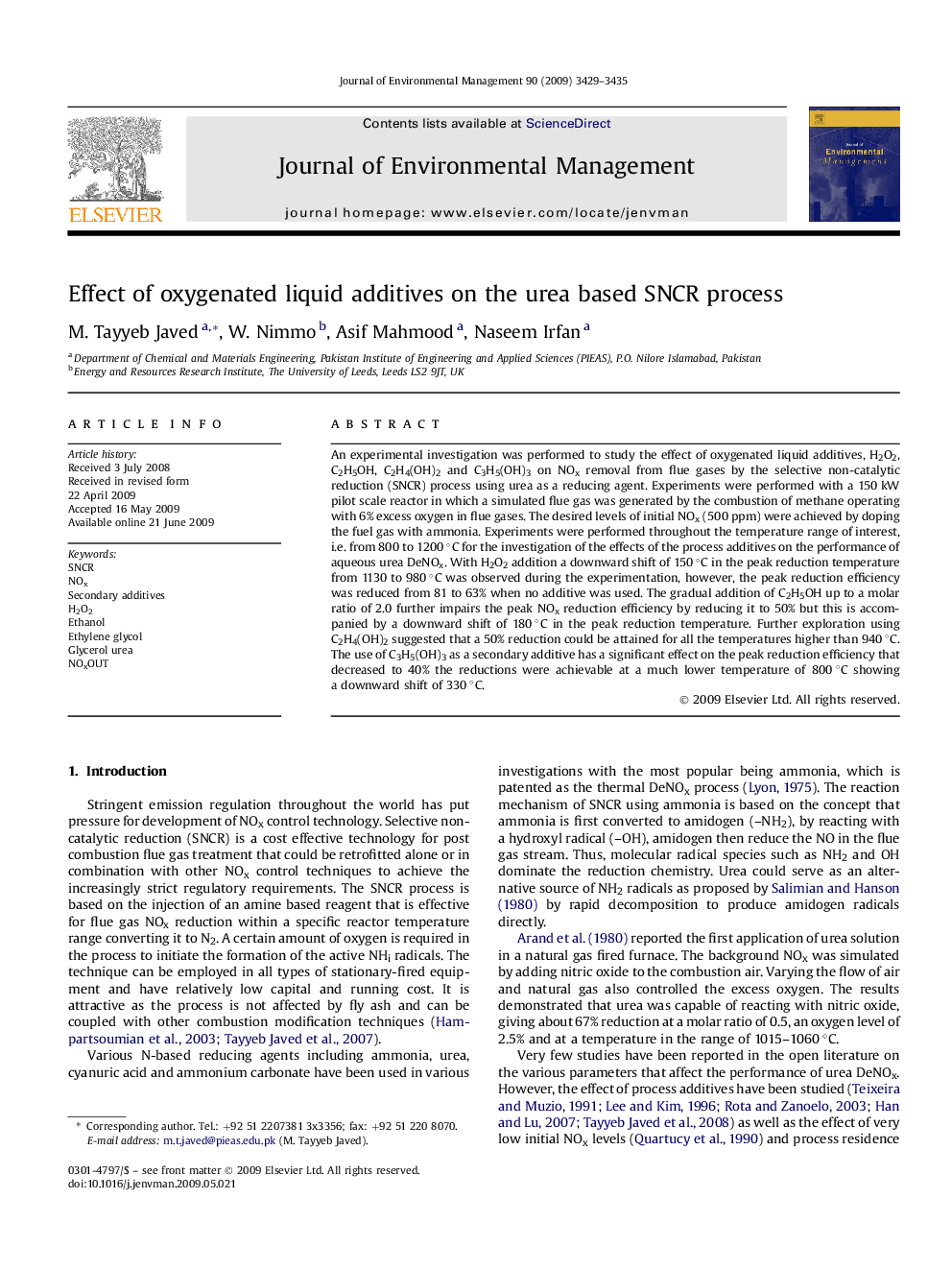| Article ID | Journal | Published Year | Pages | File Type |
|---|---|---|---|---|
| 1058036 | Journal of Environmental Management | 2009 | 7 Pages |
An experimental investigation was performed to study the effect of oxygenated liquid additives, H2O2, C2H5OH, C2H4(OH)2 and C3H5(OH)3 on NOx removal from flue gases by the selective non-catalytic reduction (SNCR) process using urea as a reducing agent. Experiments were performed with a 150 kW pilot scale reactor in which a simulated flue gas was generated by the combustion of methane operating with 6% excess oxygen in flue gases. The desired levels of initial NOx (500 ppm) were achieved by doping the fuel gas with ammonia. Experiments were performed throughout the temperature range of interest, i.e. from 800 to 1200 °C for the investigation of the effects of the process additives on the performance of aqueous urea DeNOx. With H2O2 addition a downward shift of 150 °C in the peak reduction temperature from 1130 to 980 °C was observed during the experimentation, however, the peak reduction efficiency was reduced from 81 to 63% when no additive was used. The gradual addition of C2H5OH up to a molar ratio of 2.0 further impairs the peak NOx reduction efficiency by reducing it to 50% but this is accompanied by a downward shift of 180 °C in the peak reduction temperature. Further exploration using C2H4(OH)2 suggested that a 50% reduction could be attained for all the temperatures higher than 940 °C. The use of C3H5(OH)3 as a secondary additive has a significant effect on the peak reduction efficiency that decreased to 40% the reductions were achievable at a much lower temperature of 800 °C showing a downward shift of 330 °C.
